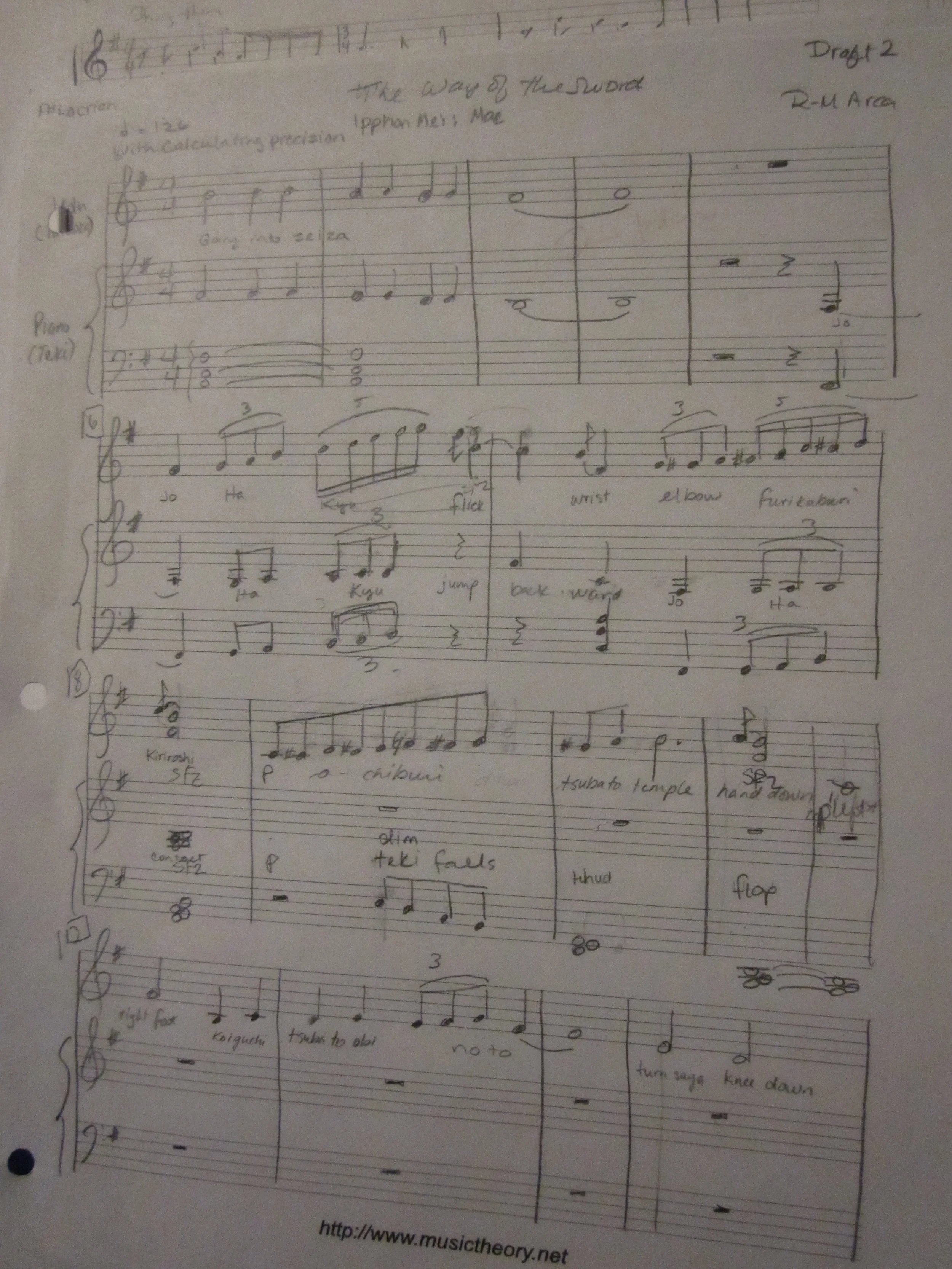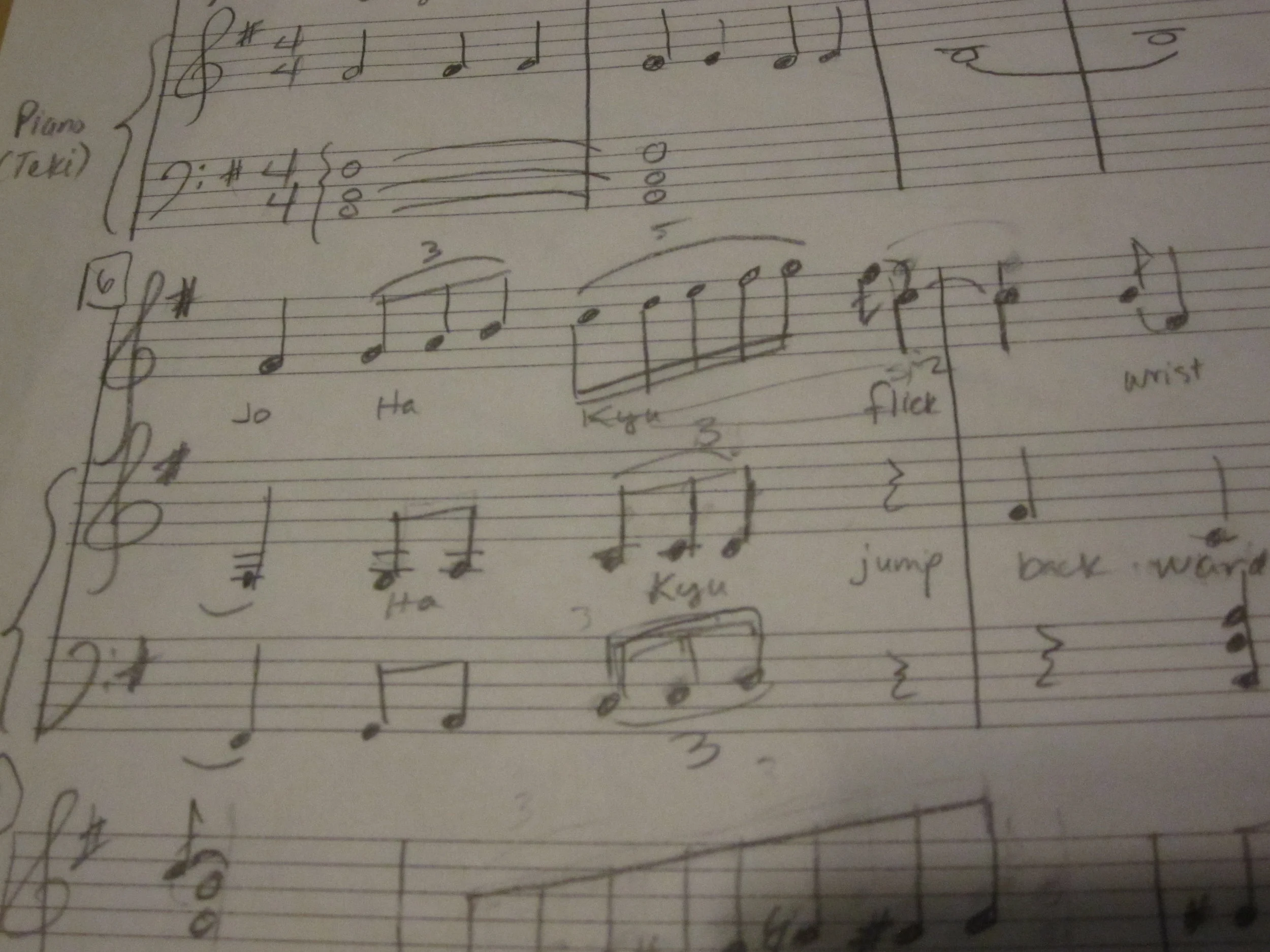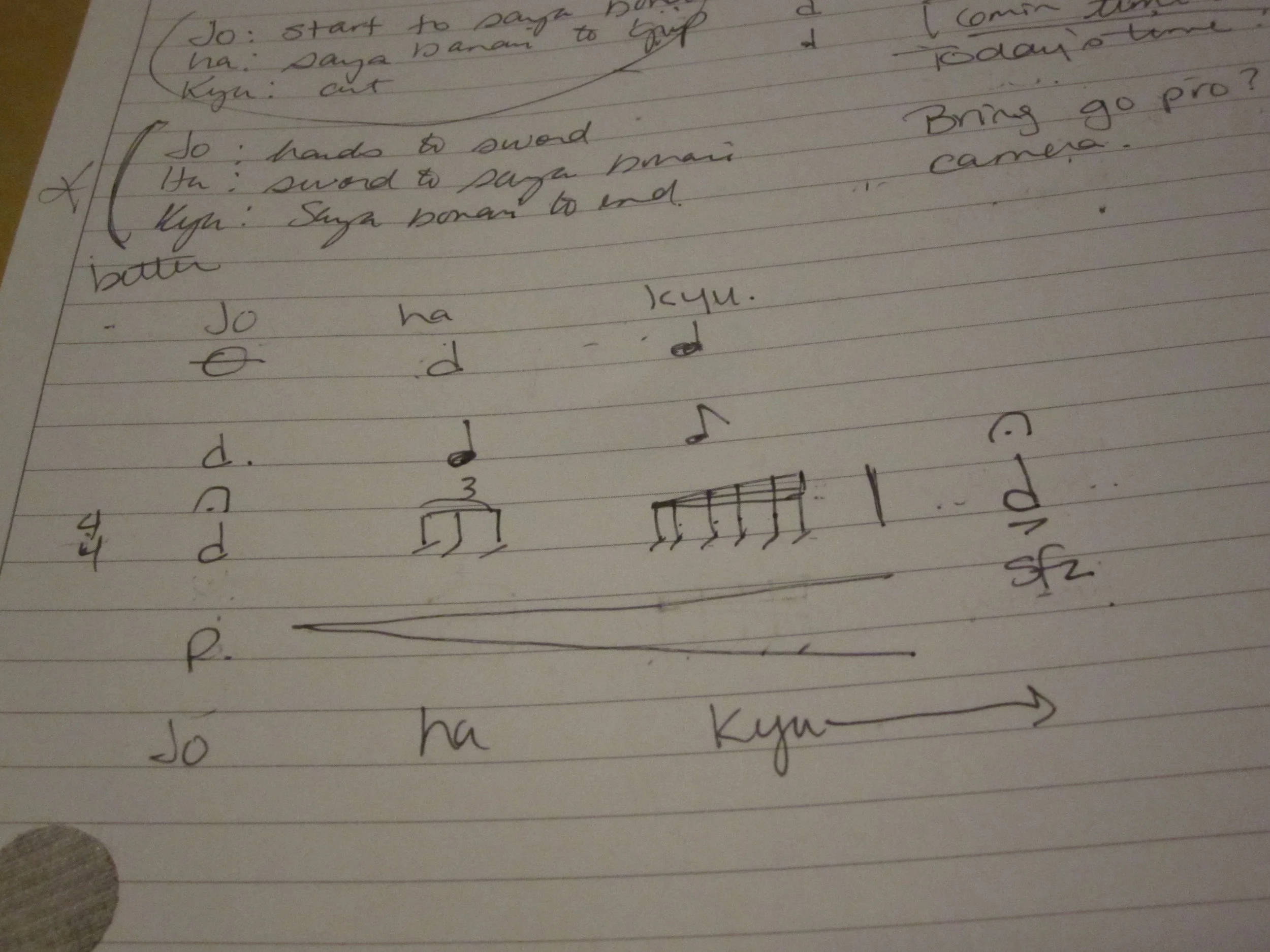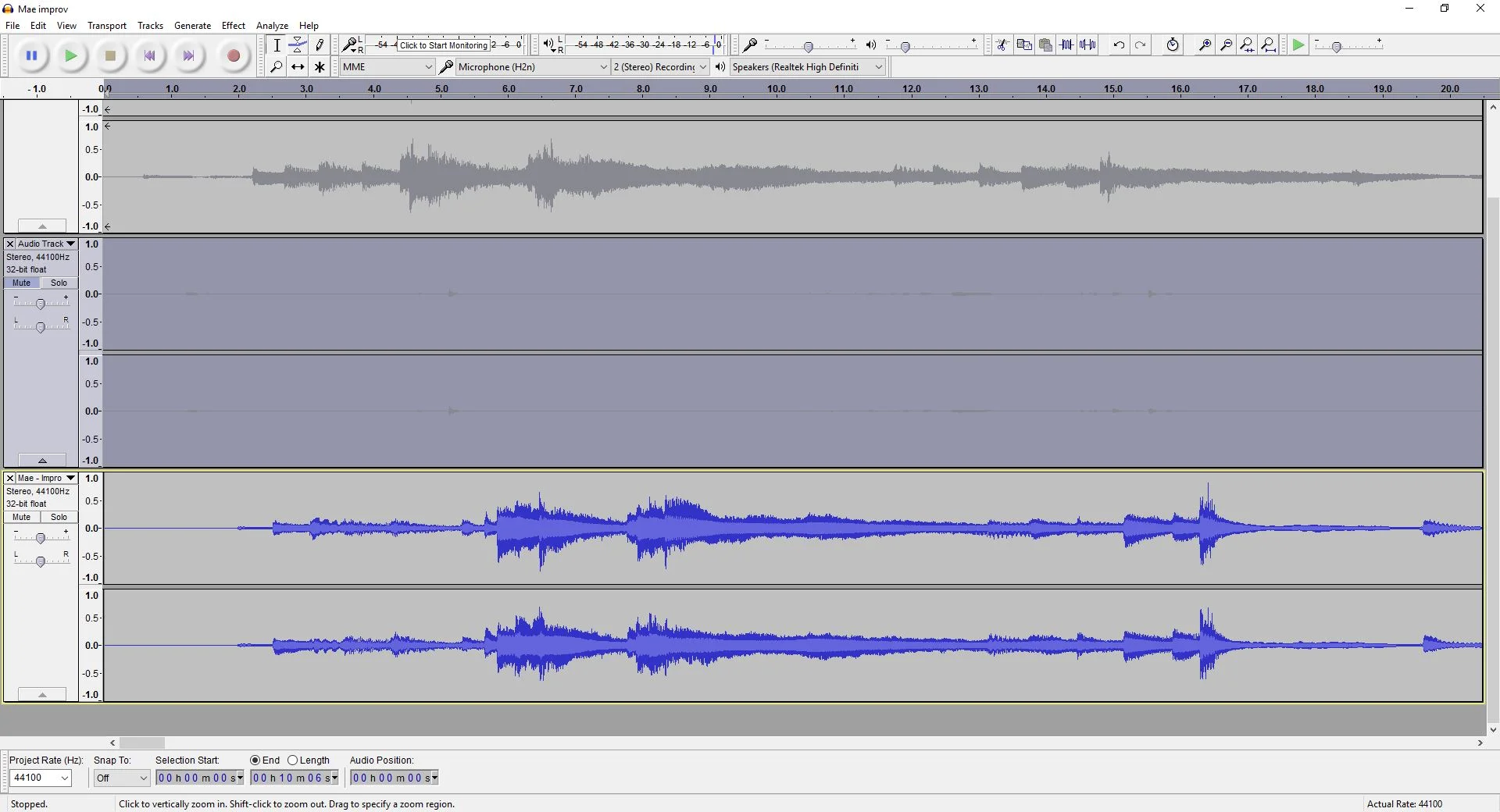Several months ago, one of my fellow iaidoka (AKA, “The Tiny Samurai”) posed a question to Kim Taylor sensei of Sei Do Kai with regards to beats and budo. Taylor sensei shared some of his thoughts here, then made a reference to me (AKA, “The Tinier Samurai”) to try tackling the question.
When I first began my Iai journey in the mid 2000s, I recognized immediately the many shared themes between music and martial arts. Beats and budo, now this is something that I have been grappling with since Day One. More on that later. First, I’ll touch upon some of Taylor sensei’s other points that resonated with me.
Music as a Metaphor for the Story
Taylor sensei said that music can be used to tell the riai, the story of a kata. That makes a lot of sense to me as a musician and an iaidoka. Whereas books tell stories through words, music tells stories through sound and silence. Of all the performing arts, kata is most like dance, as both tell a story through movement.
I recently stumbled upon a draft of some scores I wrote back in 2007 where I began to translate the kata into music. This is as far as I got.
In Mokuso, I used a major pentatonic scale and quartal harmonies to give an Oriental sound. I gradually slowed the rhythm down to show the progression from having jumbled thoughts to achieving mushin (“no mind”), where I am calm and alert.
In Mae, I used a Locrian mode. I find it the creepiest of all the old church modes. I used two voices. The high voice depicts the iaidoka, while the piano is the teki. Register depicts movement up and down, dissonance and dynamics indicate the sword’s movement, while rhythm represents jo ha kyu. You’ll notice in the score that I even scribbled down what was happening in the kata.
My early scribbles for setting Ippon Me Mae to music. The top staff is the iaidoka, while the bottom two represent teki. Credit: R-M Arca.
Add a training hiatus in the middle of my journey, age, increased knowledge and experience, and I have a slightly different perspective on my budo. These days, I’m really trying to refine my jo ha kyu timing. If I were to translate the kata now, I would take a different approach. Rhythm would play a much bigger role. It would most likely be non-metrical or polymeter. Plus, I’d use one of the Japanese scales I learned earlier this year.
Copying Another’s Performance to Achieve Mastery
In his post, Taylor sensei said that “A perfect copy of James Ehnes is going to be an actor playing the part.” Agreed. Does parroting a famous artist show that you truly understand what’s going on? No. Does it show that you understand the instrument? Nope. Does it show who you are? Not at all.
On a related note: Can a robot perform a piece better than a person? Can a machine completely capture the essence of a person’s performance? Technology can now recreate the performances of famous pianists. Check out the Steinway Spirio:
When I saw the Spirio in action at Steinway Pianos for the first time, my initial reaction was, “Creepy.” Sure, it was cool to see that we can do this, but it just felt like it was a shadow of Gershwin’s actual performance. I was drawn more to Gershwin’s recorded performance on the TV screen versus the piano’s recreation of it. It had more soul to me.
I could see George’s expression, the speed of his attack, his arm gestures, and his breathing. Those little things told me much more about the story and his playing than watching keys being pressed by mechanical means.
Music students who work through either the Royal Conservatory of Music or Conservatory Canada have a set list of repertoire to choose from. Some pieces are more popular than others, so sometimes, teachers, adjudicators, and examiners hear the same pieces countless times from multiple students. The notes are the same, but each student’s interpretation is unique. Not only that, each time they work with their own teacher or obtain feedback from an adjudicator or coach, it undergoes another metamorphosis.
One student make take a piece at the low end of the recommended tempo range, whereas the next may perform it at the opposite end. One may use a heavier touch. Another may use dramatic dynamic contrasts. One may choose to take extra time in Bar 8, while another may push the tempo in that same spot.
It doesn’t necessarily mean that one student has achieved a higher level of mastery than another. For that, one must ask if technical fluency was in evidence and whether the performer convincingly told us the story in a way that is in style with the form and the idiom.
To a practiced listener, it is possible to recognize a musician by their sound, or to recognize a musician’s lineage by how they play. Budo has that too. Although we strive to get our timing in line with “dojo timing,” each of us has a slightly different internal timing. Whenever we run through our Seitei Iaido kata as a club, the group timing differs ever so slightly, depending upon who is leading, who is there, and how focussed everyone is. Regardless, it should still be relatively close to sensei’s timing.
That’s the beauty of it. We don’t want to be carbon copies of someone else. The subtle differences provide some variety to the same story - and that’s what keeps things interesting.
The Same Art but Different Eras or Regions
Perhaps one day, I’ll get around to completing my musical set of Iaido kata. Unfortunately, that day isn’t anytime soon. Real life commitments have a tendency to cut into composing time.
Since The Tiny Samurai posed her question, I have also pondered Iaido kata on a structural and stylistic level. The seitei set reminds me of a Baroque suite of dances. Each dance represents a different country, e.g. a sarabande is Spanish, whereas a minuet is French.
Baroque dances have a set structure, binary or rounded binary. They also have a set order of steps. Some have telltale rhythms. The time signature changes depending upon the dance, but the tonic key remains the same. Very little markings are given in terms of dynamics and expression, leaving room for various interpretations of the same story.
I see the koyru iaido sets as being akin to character or mood music from the Romantic era. These are generally composed in ternary form, although other structures, like through-composed, crop up from time to time. Like certain pieces, e.g. polonaise or lieder, each koryu can represent a different region.
My mind wanders to Modest Mussorgsky’s Pictures at an Exhibition. Each piece depicts a different painting that two characters are viewing and sometimes, debating over:
Another way to describe this musically is to have two pieces with the same title and same overall structure. However, each are completely different:
Leitmotif in Budo
Merriam-Webster Dictionary defines leitmotif as “an associated melodic phrase or figure that accompanies the reappearance of an idea, person, or situation especially in a Wagnerian music drama.” John Williams made good use of it in the Star Wars movies with “Luke’s Theme,” the “Imperial March,” and so on. Taylor sensei also mentioned it in his beats and budo post.
I could see one leitmotif for Muso Shinden Ryu noto and a different one for Muso Jikiden Eishin Ryu. O-chiburi could be notated a little differently from yoko chiburi. Musically, that would provide unity and consistency.
Beats and Budo - Reprise
Beats and budo - Miyamoto Musashi called this rhythm-timing in the Go rin no sho. Ever since reading that, I’ve been playing around with beats. I came up with timing for the opening etiquette, which I waxed poetic on in The Iaido Journal. Here’s the link to the article, entitled Rhythm and Flow.
I’ve been experimenting with the following rhythms for jo ha kyu:
My rhythmic representation of jo ha kyu in 2007. Credit: R-M Arca.
A screenshot revealing the waveforms for that same section of music. The iaidoka's jo starts just after the cursor. Credit: R-M Arca.
Jo Ha Kyu circa 2016. Credit: R-M Arca.
The last one is the one I’ve been playing around with. I don’t hear pitches. When I’m by myself, I’ll use a bit of singspiel, saying “Jo ha kyu”, in rhythm, from the moment my hands to go my tsuka to nukitsuke in Mae. I use dynamics for intensity.
Last night, I was studying a video of Alex Cook sensei practising Mae and improvising at the piano to it. I used the Hirajoshi scale and a lot of tone clusters. The result isn’t pretty sounding, but then, when you think about the riai for Mae, it’s not supposed to be:
Studying the waveforms made it easier to see how I need to have more ha not only in my iai but in my musical interpretation of the riai.
The waveforms reveal the quickening of sound during ha, yet still distinctly shows that there is a ha. This is what I must work on. Credit: R-M Arca.
I will do a bit of rhythmic dictation and attempt to notate sensei’s rhythm. I have a feeling that until I have the rhythm notated in a way that I can count the beats, I will be playing with jo ha kyu for a while longer yet.






